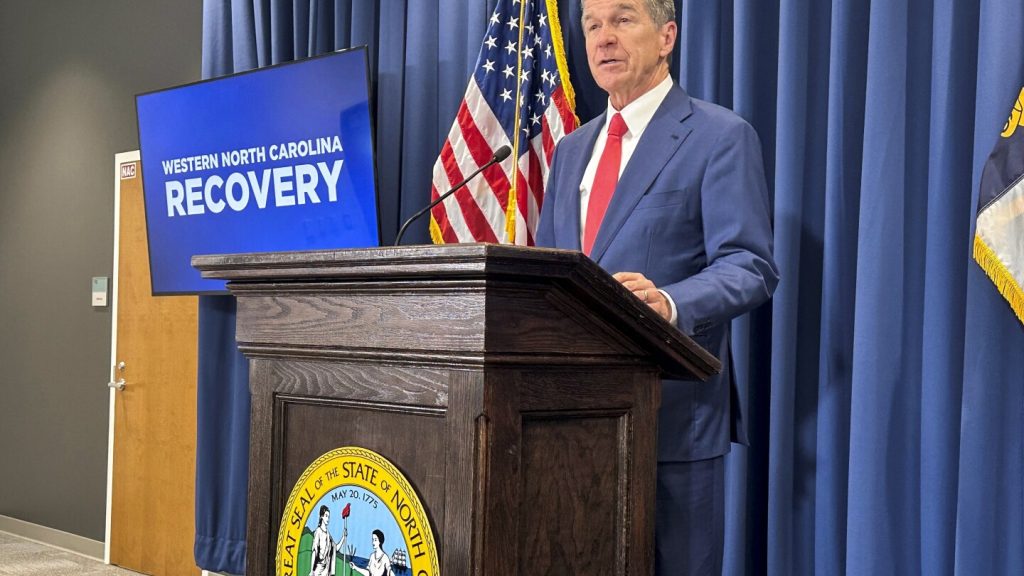Hurricane Helene caused catastrophic flooding and destruction in western North Carolina, resulting in an estimated record $53 billion in damages and recovery needs, according to Gov. Roy Cooper’s administration. This surpasses the previous record of $17 billion in damages from Hurricane Florence in 2018. Cooper has requested $3.9 billion from the General Assembly to help pay for repairs and revitalization, referring to it as a “down payment on western North Carolina’s future.”
The storm resulted in 96 deaths and brought historic levels of rain and flooding to the mountains in late September. The aftermath of Hurricane Helene caused 1,400 landslides, damaged over 160 water and sewer systems, more than 6,000 miles of roads, over 1,000 bridges and culverts, and an estimated 126,000 homes. Approximately 220,000 households are expected to apply for federal assistance as part of the recovery efforts.
The Republican-controlled legislature in North Carolina planned to meet for a one-day session to advance additional recovery legislation in response to Hurricane Helene. A $273 million package was unanimously approved two weeks prior to provide flexibility to state agencies, displaced residents, and officials in 25 western counties. Thirty-nine counties in the state are within the federally declared disaster area, and there are several billion dollars in state government coffers that can be accessed for recovery spending.
Cooper’s spending request includes funds for programs such as a two-phase recovery program for businesses in the hardest-hit areas, grants for repairs to utilities and debris removal, assistance for farmers with uninsured losses, and funding for public school and community college capital needs. Additionally, funds are earmarked to assist homeowners and renters with rebuilding and minor repairs. The request also seeks $175 million to cover remaining repairs from previous hurricanes, which was criticized by leading Senate Republicans as a sign of poor management.
The recovery efforts for Hurricane Helene are expected to be a long process, with the federal government anticipated to cover a portion of the damages and expenses. The budget office estimates that private sources will cover a relatively low share of the expenses due to the lack of flood insurance among homeowners and farmers in the affected areas. Cooper’s administration highlights challenges such as rising construction costs, labor shortages, the COVID-19 pandemic, and insufficient congressional appropriations in the recovery process from previous hurricanes.


